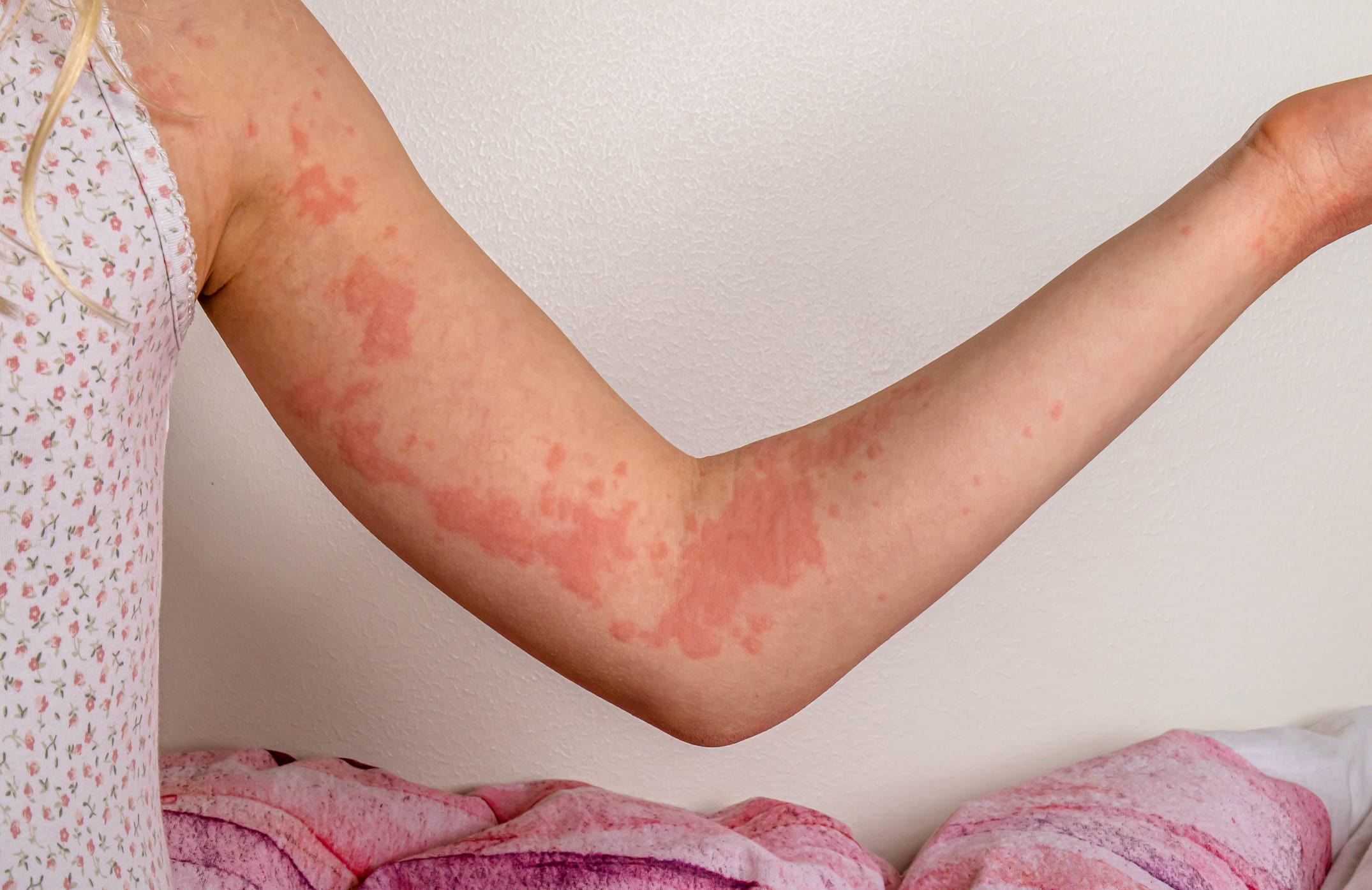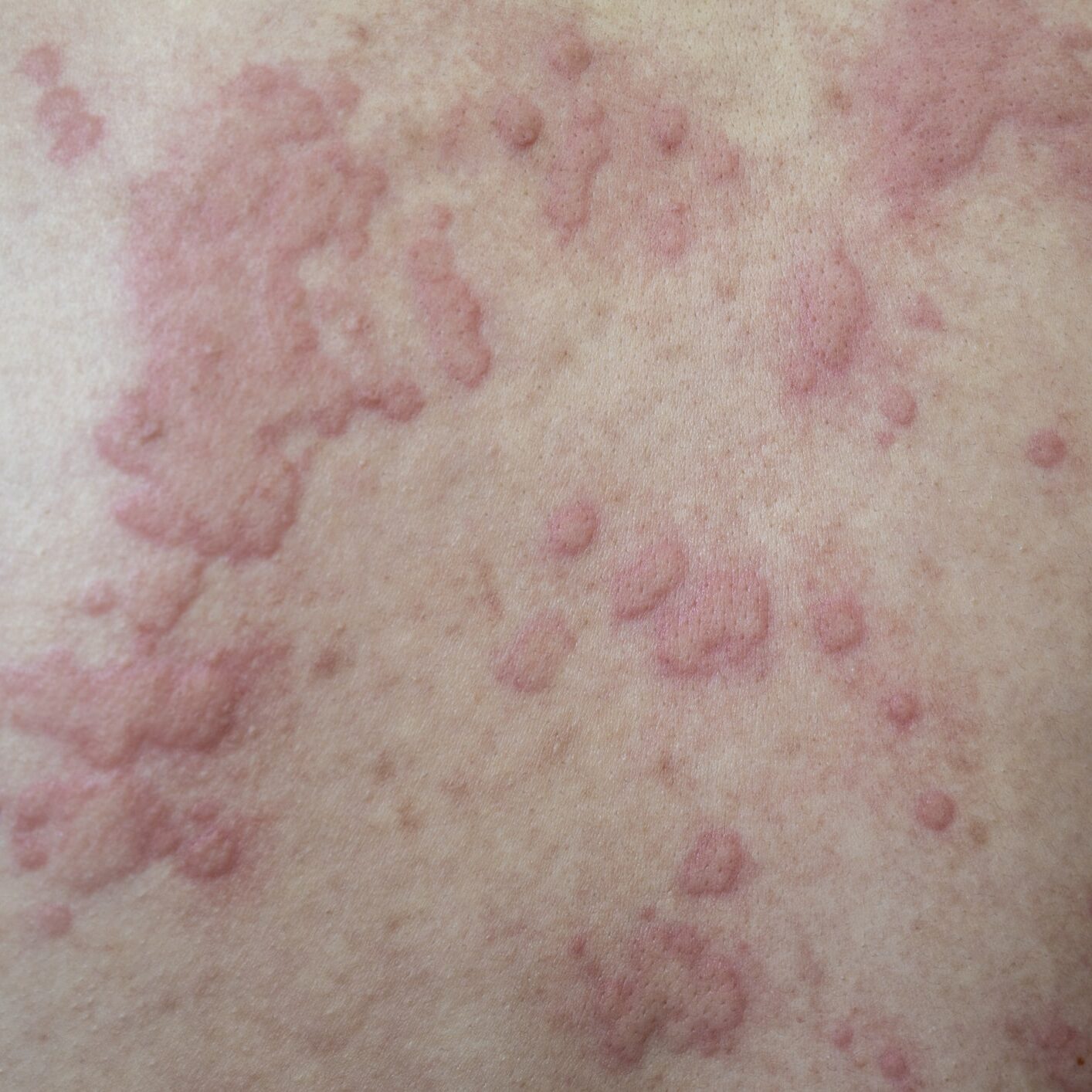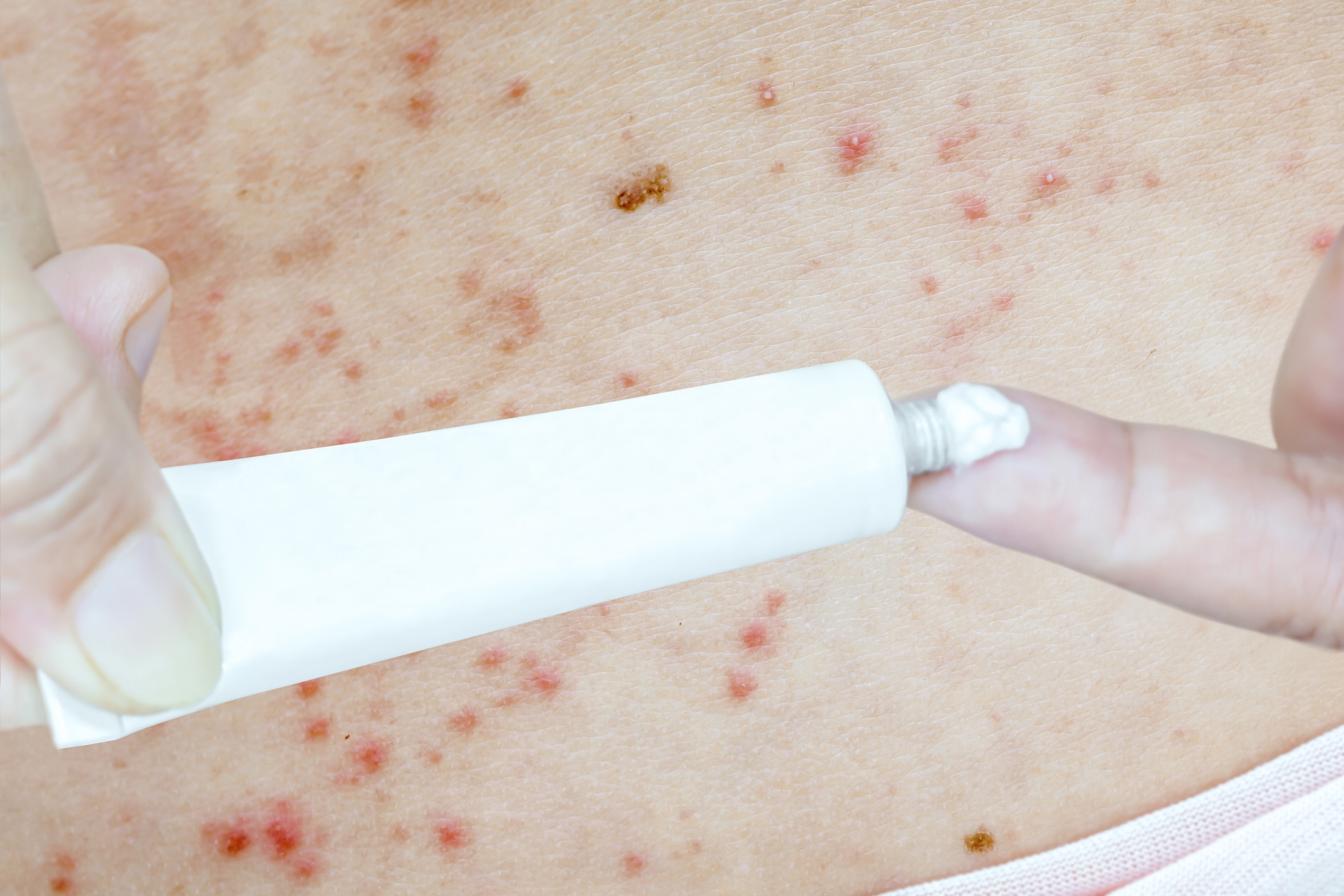Hives causes itchy, red bumps to suddenly appear, often as a result of an allergic reaction to medications or other external factors.

Hives are itchy, red welts or small bumps that last from 15 minutes to several hours. They usually appear suddenly and leave no trace when they disappear. Crops of hives may appear several times a day as swollen pink bumps, or raised lesions on the skin. They may come and go for days or weeks, or sometimes longer.
Hives are harmless, except when they cause throat swelling, which is rare but requires immediate treatment. Angioedema is a hive-like swelling of the lips, eyes, or other tissue, and may take 24 hours or more to resolve.

Hives are usually the result of an allergic reaction which causes release of histamine from cells in the skin. Histamine causes the blood vessels to dilate and leak fluid into the surrounding tissue, which causes the skin to swell. This irritates nerve endings, resulting in the sensation to itch. In severe reactions, feelings of nausea, vomiting and dizziness may occur.
Medications such as penicillin, aspirin or codeine can cause hives in those who are allergic. Certain foods commonly trigger hives. Infections such as infectious mononucleosis, urinary tract infections, the common cold, infected teeth or sinuses can also cause hives. Very rarely, hives have been the result of an internal disease, such as an overactive thyroid. Occasionally, physical agents such as pressure, heat, sunlight, exercise or cold may cause hives.
Since medications are the most common cause of hives, please list all medications you have been taking prior to your visit. These include headache tablets, allergy pills and medications for stomach discomfort, laxatives, tranquilizers, cough medicines, pain killers and herbal medicines. List any unusual foods you have ate in the last two days prior to the first appearance of your hives. It is important to search for a cause of the hives if you have having other symptoms such as fever or joint pains, or if you have had hives more or less daily for more than six weeks.

Diagnosis is the first step in treating hives. This can be done by visual inspection of the affected area or in some cases, by a skin biopsy with one of our providers. This is particularly helpful in cases when hives are associated with vasculitis (inflammation of the blood vessels). The mainstay of treatment is oral antihistamines. At times, oral or systemic steroids may be used to bring severe cases under control.
Additional tips for managing hives: